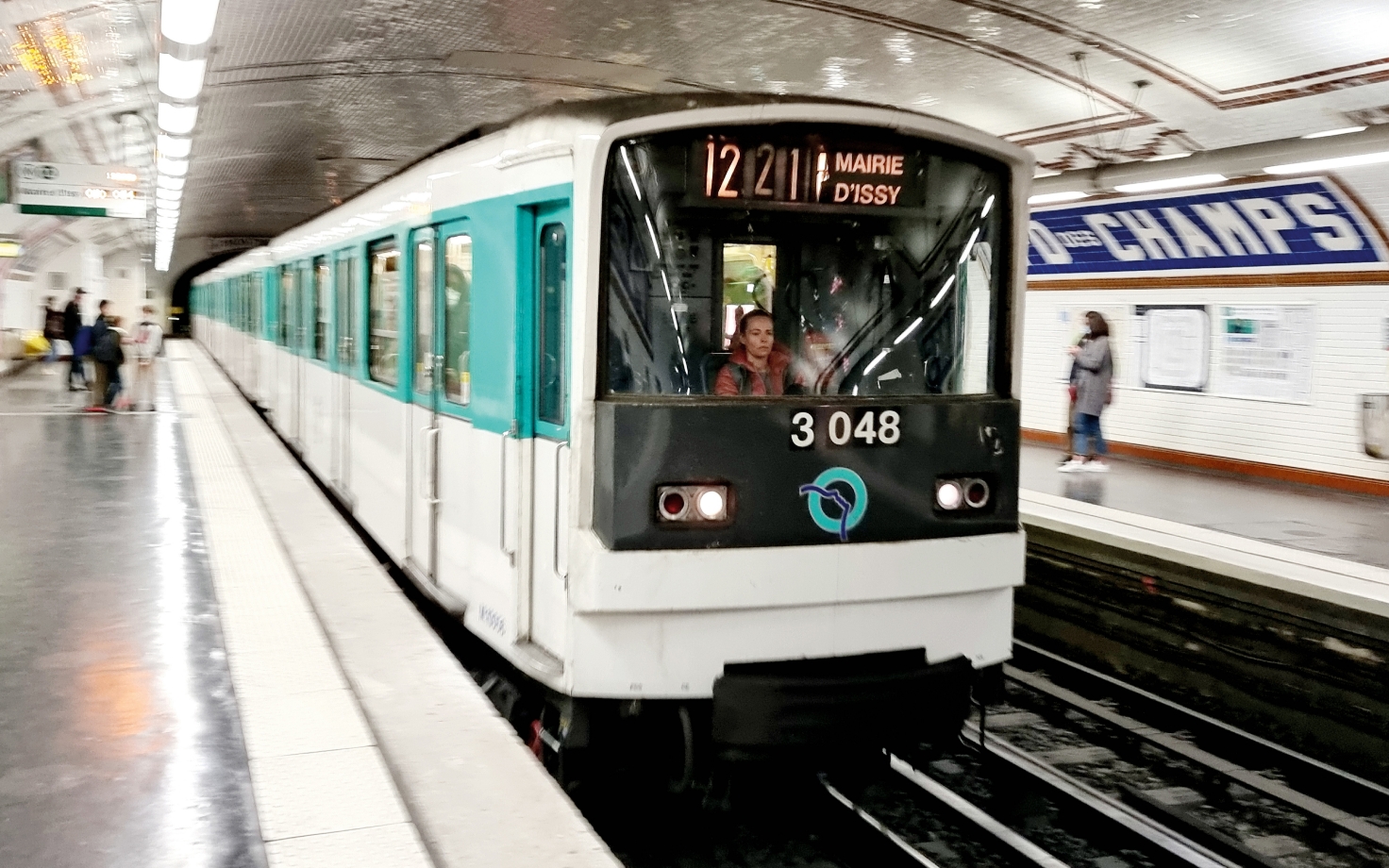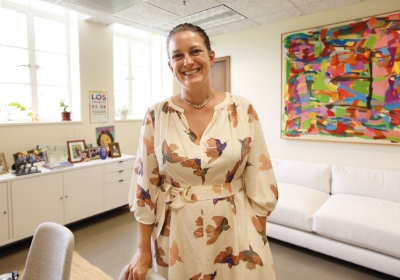PARIS — WHEN FRANCE BUILT its first railroads, trunk lines jutted out from Paris in every direction. The same radial pattern emerged inside the city when the Paris subway took shape decades later. Today, eight subway lines still converge in one hectic station at the central axis: Châtelet-Les Halles.
Nearly 125 years after this core station opened with art nouveau canopies over its sidewalk entrances, it still functions well despite chronic grumbling among the mobs of riders who hustle through it.
Part of what makes the Paris subway one of the finest in the world is this layout of its main lines as spokes on a wheel. For many of the 2 million people who live in the city, it remains the quickest way to get around. Paris is compact — small enough to fit inside Simi Valley or Long Beach.
But sprawl has created new demands on the system, and the ways which Paris is responding, suggest a future for the city that all but invented sprawl. Paris is now rethinking, and rebuilding, its transit system to account for how the city has grown and spread out. Los Angeles might take note.
More than 12 million people live in the Paris metro area, by far the most populous in the European Union. For decades, Paris has been extending lines further out from the city center, yet the subway still fails to meet most transit needs of the 10 million people in the suburbs.
Now, however, the subway is undergoing a radical transformation as France builds the Grand Paris Express. At a price of $40 billion, nearly double initial estimates, it is Europe’s biggest and most expensive public infrastructure project.
Suburbs and the core
In a bold break from tradition, none of the four subway lines under construction — the 15, 16, 17 and 18 — will enter Paris. Instead, they will connect far-flung suburbs to one another with trains zooming underneath office parks, sports venues, universities, hospitals and vast stretches of housing. At last, the subway’s center of gravity is shifting outward.
The Grand Paris Express is a belated recognition that millions of people both live and work in the suburbs, yet — due to the subway’s radial design— waste time commuting through the city center. Many of France’s biggest companies, including Renault (automobiles), Orange (telecommunications) and Total (energy), employ huge workforces in the suburbs.
The scale of the Grand Paris Express is immense. France is digging tunnels for 112 miles of new track underground. It is laying another 12 miles above ground, most of it on a viaduct slicing through the Saclay Plateau, a cluster of science and technology businesses and schools south of Paris. The subway project has employed more than 7,200 workers at 170 construction sites, at times dangerous; five people have died on the job.
By the time of the Grand Paris Express’ scheduled completion in 2031, 68 new subway stations will have opened, each designed by its own team of architects and artists as a unique economic and cultural hub. The extravagance of the designs could vault more than a few into the top tier of European rail stations despite the obscure locations — Bagneux, Gonesse and Clamart among them. The few well-known stops include La Défense, a dense business district of skyscrapers, and the Stadium of France, the track-and-field arena of the 2024 Summer Olympics.
The goals of the Grand Paris Express would ring familiar to Californians. Draw new riders to public transit. Decongest roadways. Reduce air pollution. Promote density and discourage sprawl. Responding to fears of gentrification, the government has promised rent subsidies to many tenants in housing that developers are building near the new stations.
Beyond transit, the project’s main ambition is to diminish social and economic inequalities that have plagued the Paris suburbs for generations, largely by connecting isolated havens of poverty to schools and job opportunities long out of reach for those without cars. Those, too, are priorities heralded by transit planners in Southern California, having learned hard lessons through the region’s long reliance on freeways.
Bernard Cathelain, an executive board member at the Société des Grands Projets, the state-owned company that is building the Grand Paris Express, sees each new station as a means of transforming day-to-day life in the suburbs. “The arrival of the subway,” he said, “changes everything.”
Consensus around project
French President Emmanuel Macron celebrated the opening of the first seven stations with a ceremony in June at the biggest, Saint-Denis- Pleyel, just north of Paris. It is a short walk from the Olympic Village where athletes were housed this summer in more than 2,800 newly built apartments in Saint-Denis, one of France’s poorest suburbs.
It was fitting that standing alongside Macron was one of his predecessors, Nicolas Sarkozy, who set the Grand Paris Express in motion with a 2009 speech outlining his vision for the project. Political consensus and collaboration have been crucial to moving it forward, starting with a 2010 law declaring that it would serve the national interest. The law set up the Société des Grands Projets to float bonds and build the project. It designated a slew of taxes — now raising $900 million a year — to pay off the debt by the 2070s.
At Saint-Denis-Pleyel, sunlight penetrates a grand atrium and illuminates platforms where four lines will converge 90 feet below ground. It is the northern terminus of the subway’s newly extended Line 14, the last one built to cross the city center.
Line 14 is now the spine of the Grand Paris Express. Its southern terminus, a 40-minute ride from Saint-Denis Pleyel, is a newly opened station at Orly Airport. When the station opened in June, Line 14 became the first to offer a direct subway ride between the city and Orly, France’s most heavily traveled airport after Paris Charles de Gaulle, which is already served by the subway.
The next station to open, in December, will be south of Paris at Gustave Roussy, one of Europe’s top cancer hospitals and research centers. Tens of thousands of patients are treated there each year. It has long been cut off from rapid transit but will soon be the juncture of Lines 14 and 15, offering direct rides on state-of-the-art automated trains to Paris, Orly and scores of suburbs on all sides of the city. (All four of the new lines will intersect many times with the existing subway, speeding up travel between Paris and the suburbs.)
Jobs, schools, healthcare
The larger goals of the Grand Paris Express will be more seriously tested in such places as Clichy-Sous-Bois, an eastern suburb with sky-high unemployment, pervasive poverty and scant public transit. After two teenage boys, Bouna Traoré and Zyed Benna, were electrocuted at a power substation in 2005 while fleeing police in Clichy-Sous-Bois, riots erupted all over France for weeks in protest against social conditions in poor suburbs.
Planners hope that fast access by subway to jobs, schools and healthcare will improve the lives of people in Clichy-Sous-Bois. That city’s mayor was so moved at the subway station’s recent groundbreaking that he wept, Cathelain recalled. “It was an enormous emotion,” he said.
Architects and artists who designed all 68 of the stations have tailored plans to the distinct character of each neighborhood. The idea is to give suburbs “real urban monuments worthy of a world-class city like Paris,” said Valérie Pécresse, president of the Île-de-France regional council that governs the metro area.
“It’s going to be absolutely magnificent,” she said. A conservative who was initially skeptical of the cost (the art budget alone is $39 million), Pécresse came to embrace the high-end design. “It’s like a mark of nobility for a suburb to have a station that isn’t just a place to pass through but rather a place that leaves an impression,” she said.
For a station in the industrial suburb of La Courneuve, architect Pascale Dalix sought to pay tribute to the town’s 19th-century factories with handmade bricks in the vaulted ceiling and atrium. She thought the station should serve as a gateway to the nearby Georges Valbon park, the region’s biggest outside Paris, so she and artist Duy Anh Nhan Duc covered it with a garden. The rooftop will support seven feet of soil for trees, bushes and vines cascading down station walls to the street. “I wanted to tie people to nature,” Nahn Duc told an architectural conference in Paris.
In Vitry-sur-Seine, another industrial suburb, architect Frédéric Neau designed the station as a gaping cave with floating escalators dropping into an abyss. Abdelkader Benchamma, the artist who painted the undulating walls, said he was inspired by the caves of Ethiopia, Algeria and France’s Dordogne region “to create a kind of stupor upon arriving in this magic spot, out of place, from another dimension, where you lose your bearings a little.”
One of the Grand Paris Express designers compared its impact to the 19th century layout of the Grands Boulevards that define the Paris cityscape. Another, Patrick Jouin, who oversees selection of station fixtures, called the attention to aesthetic detail an “expression of the social contract between all of us.”
“I am convinced that with beauty, we bring calm, we respect everyone, and in the end, we are happier,” he told Le journal du Grand Paris. “If we had stuck to the functional, we would have tiled platforms and stainless steel surfaces like in an operating room. But on this project, there is a lot of ambition. It goes beyond a pretty curve. It’s about collective well-being.”
The main point, nonetheless, is better transit. When the Grand Paris Express is done, planners say, nearly everyone in the region will live within a mile of the subway. Something similar, Cathelain said, should be within reach for any metro area with comparable resources. “It seems to me that’s not something that Los Angeles couldn’t do as well,” he said.

























